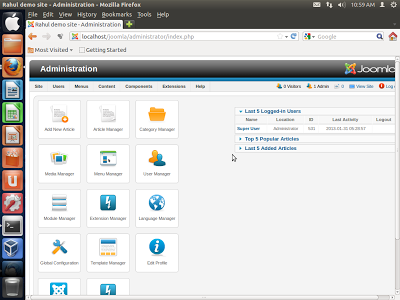Slurm shows network activity for a given interface. Total uploads and downloads are shown together in text and ASCII graphics. Data updates every second by default, and the graph scrolls from left to right according to network usage.
Installing slurm
Slurm is available in the repositories. In Ubuntu/Xubuntu/Linux Mint, simply install from the command line.
sudo apt-get install slurm
Running slurm
Monitor a wireless network device
slurm -i wlan0
Monitor a wired NIC
slurm -i eth0
Monitor a Data card/Dongle
slurm -i ppp0
Slurm Display
here green indicates downloads (RX), and red indicates uploads (TX). Each vertical column, red or green, represents one second of time by default.




















.jpg)
